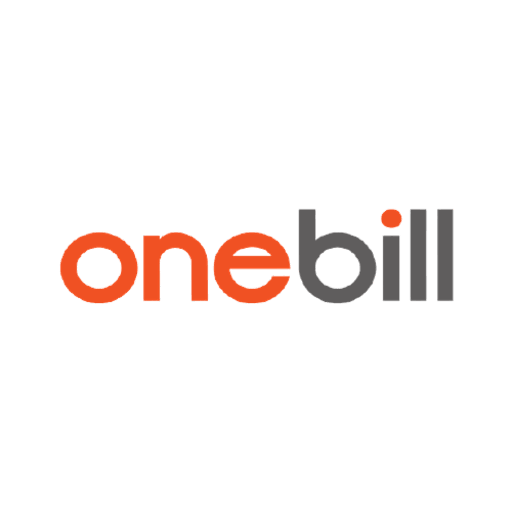What Is Subscription Management Software?
Subscription management software is a powerful tool that simplifies and automates the process of handling recurring subscriptions and payments for organizations of all kinds. This program enables organizations to keep on top of their subscriptions by providing a consolidated platform for tracking, monitoring, and managing all elements of their subscription services.
With the development of subscription-based business models, subscription management software has become a must-have tool for businesses wishing to efficiently manage their growing subscription base. At its heart, subscription management software provides a variety of functions to help simplify and optimize subscription administration. These features usually include subscription tracking, automated billing and invoicing, customer administration, and analytics and reporting.
Businesses can use these capabilities to manage their subscriptions effortlessly, from sign-up to renewal, eliminating the need for manual processes and paperwork. Subscription management software allows businesses to effortlessly create, change, and cancel subscriptions as needed. This assures precise and timely billing, reducing the likelihood of late or inaccurate payments.
Additionally, the software allows organizations to maintain customer information and preferences, such as personal and financial information, to provide a consistent customer experience. This not only enhances customer retention but also raises customer satisfaction. Another important feature of subscription management software is its extensive reporting and analytics capabilities.
Businesses may learn a lot about their subscription-based services by using data from memberships, payments, and consumer behavior. This data can be used to analyze patterns, optimize pricing tactics, and make informed decisions about future subscription offerings. Furthermore, subscription management software is meant to function in tandem with other business tools, such as CRM systems and accounting software, to create a seamless and efficient workflow. This allows firms to effortlessly import and export data while also streamlining procedures across departments.
What Are The Recent Trends In Subscription Management Software?
In recent years, subscription-based business models have grown in popularity among businesses of all sizes and industries. This has resulted in a significant need for efficient and effective subscription management software that assists organizations in managing and optimizing their subscriptions. As a result, the subscription management software market has grown and changed to meet evolving business requirements.
Let's explore, we'll look at the latest trends in subscription management software and how they can help your organization.
1. Increased Flexibility And Customization: One of the most notable changes in subscription management software is the greater flexibility and customization choices accessible to enterprises. Many software suppliers now offer variable price plans, allowing organizations to select the package that best meets their requirements and budget. Furthermore, subscription management software now includes additional customization options, allowing businesses to modify their subscriptions to better suit their specific business models and client needs.
2. AI-Powered Solutions: Artificial intelligence (AI) has contributed significantly to the advancement of subscription management software. Artificial intelligence-powered systems may now predict and personalize subscription offerings based on user behavior, preferences, and previous interactions. This not only improves client satisfaction and retention, but also simplifies the subscription management process for organizations.
3. Integration With Other Business Systems: As businesses continue to use different software systems for various tasks, subscription management software has grown to smoothly interact with other business systems. This enables improved workflow management and data sharing, resulting in a more simplified and effective subscription management process.
4. Transparency & Customer: Control With the advent of subscription-based businesses, users are becoming more aware of their subscriptions and demanding greater transparency and control. As a result, subscription management software now includes capabilities like subscription analytics and self-service portals, allowing users to examine and control their subscriptions more simply. This trend benefits both customers and businesses by lowering churn and increasing customer satisfaction.
5. Greater Emphasis On Security And Compliance: With the rise in data breaches and the implementation of stringent data protection legislation, subscription management software has shifted its focus to security and compliance. Many software suppliers now incorporate powerful security features, such as data encryption and secure payment processing, to protect critical customer information.
Benefits Of Using Subscription Management Software
Subscription management software is a great tool for streamlining and simplifying the subscription process, saving you both time and money. Whether you are a small business, a large organization, or an individual wishing to manage many subscriptions, this program can give a variety of advantages that will help you optimize your subscription operations and enhance overall productivity.
One of the primary benefits of using subscription management software is the ability to automate a variety of subscription management operations. This includes automatic invoicing, billing, renewals, and cancellations. By automating these procedures, you may drastically reduce the amount of manual effort and the chance of human error, resulting in a more accurate and efficient subscription process.
Furthermore, subscription management software has a variety of tools to assist you track your subscriptions, such as real-time analytics, customer data management, and adaptable reports. This provides you with useful insights on your customers' behavior, preferences, and patterns, which can help you make data-driven decisions and optimize your subscription strategy.
Another key advantage of subscription management software is its ability to interact with other corporate tools and systems, like CRM and accounting software. This integration can help you unify your business processes and data, making it easier to manage subscriptions and acquire a complete picture of your business operations. In addition, subscription management software can improve your customers' overall experience.
With features such as self-service portals and individualized communication choices, you can give your clients more control over their subscriptions while also meeting their requirements and preferences. This can lead to improved customer satisfaction and retention rates, resulting in more revenue and business growth.
Important Factors To Consider While Purchasing Subscription Management Software?
When it comes to managing your company's subscriptions, the correct software is essential. Subscription management software can enhance efficiency and accuracy by automating invoicing procedures, tracking usage, and renewing accounts. However, with so many options on the market, it can be difficult to identify which one is ideal for your company.
To assist you make your decision, here are some crucial considerations to consider when buying subscription management software:
1. Integration With Existing Systems: Before investing in subscription management software, make sure it works seamlessly with your existing systems. This includes your CRM, accounting software, and other tools that your staff uses. A smooth integration allows you to prevent data duplication and manual data entry, which saves time and reduces the risk of errors.
2. Customization And Flexibility: Each business is unique, with its own set of requirements. As a result, it is critical to select software that is customizable and flexible. Look for options like the flexibility to establish bespoke plans and pricing, change billing cycles, and configure various payment methods. This allows you to modify the software to your exact requirements and guarantee that it is consistent with your business model.
3. Automated Billing And Invoicing: One of the most significant benefits of subscription management software is the ability to automate billing and invoicing operations. This means that the software can handle recurring transactions, compute proration, and send out automated reminders for future payments. This saves you time and effort while also lowering the chance of errors and late payments.
4. Subscription Analytics And Reporting: Tracking subscription data is critical for making informed business decisions. Look for software that provides thorough insights and reporting on churn rate, customer lifetime value, and revenue patterns. This will allow you to acquire insight into your company's performance and make data-driven decisions.
5. Customer Support And User-Friendliness: It is critical to select software that offers dependable customer support. Look for a company that provides a variety of support channels, including email, phone, and live chat. Consider how user-friendly the software is. It should have an intuitive interface that your staff can navigate and utilize without requiring additional training.
6. Security And Compliance: Given that the program stores sensitive customer and payment information, security should be a key priority. Look for a provider who adheres to industry-standard security protocols and has earned applicable compliance certifications. This will secure your data from potential cyber assaults.
By carefully considering these elements, you can select subscription management software that suits your company's specific requirements and can help optimize your workflow. Don't forget to read reviews and compare price plans to get the best deal on your investment. Finally, using the correct software can help you save time, enhance accuracy, and increase customer happiness.
What Are The Key Features To Look For In Subscription Management Software?
Subscription management software is an essential tool for businesses that want to efficiently manage their recurring income streams, automate invoicing procedures, and keep track of subscriber data. However, with so many options available in the market, selecting the proper software can be difficult.
To make an informed decision, here are the essential characteristics to look for in subscription management software:
1. Subscription And Billing Management: At its heart, subscription management software should be capable of handling a wide range of subscription models, including monthly, annual, and usage-based subscriptions. It should also provide price flexibility and enable for easy modification to fit your specific business requirements. The program should also automate the billing process, such as invoicing, payment reminders, and dunning management.
2. Subscriber Self-Service Portal: Providing clients with a self-service portal is critical in today's fast-paced world. This feature allows subscribers to manage their subscriptions, examine payment history, alter billing information, and contact support, minimizing the workload for your customer care team.
3. Automated Renewals And Cancellations: Confirm that the software can manage automated renewals and cancellations seamlessly. To maintain client satisfaction, it should be able to provide automated notifications to subscribers about forthcoming renewals as well as provide a simple canceling option.
4. Robust Reporting And Analytics: To make data-driven decisions, you must have access to accurate and up-to-date information. Look for software that includes robust reporting and analytics options, such as churn rate, revenue by subscription type, and subscriber growth, to help you track the progress of your subscription business.
5. Integration With Other Systems: Make sure the software can work with other critical company systems, such as CRM, accounting, and marketing tools, to optimize procedures and eliminate data silos. This integration will also provide you with a comprehensive view of your customer and subscriber data.
6. Security And Compliance: Given the importance of sensitive customer information and payment data, data security should be prioritized. To protect your business and your customers' data, look for subscription management software that is PCI-DSS compliant and uses strong security methods like data encryption and secure data storage.
7. Scalability And Flexibility: As your company grows, your subscription management software should be able to scale with it. Choose a solution that can handle an expanding number of subscribers, has adequate data storage, and allows you to add new features as your business grows.
Why Do Businesses Need Subscription Management Software?
Businesses of all sizes rely on regular revenue from subscriptions to stay financially stable and expand. However, administering subscription services may be challenging and time-consuming. This is where subscription management software comes in as a useful tool for businesses. One of the key reasons businesses want subscription management software is to effectively manage the full subscription process, from plan creation and pricing to renewals and cancellations.
This software allows organizations to automate operations like billing, invoicing, and payment processing, reducing errors and removing the need for manual data entry. Furthermore, subscription management software gives firms real-time visibility and control over their subscriptions. It enables businesses to track critical indicators such as subscriber count, attrition rate, and revenue, giving useful information for decision-making and forecasting.
This allows organizations to optimize their subscription arrangements in order to increase revenue and retain clients. Security is another important factor that makes subscription management software essential for businesses. It guarantees that all sensitive data, including payment information, is stored securely and in accordance with industry standards such as PCI DSS. This not only protects organizations against potential data breaches, but it also fosters customer trust and loyalty.
Furthermore, subscription management software enables organizations to provide a seamless and personalized experience to their customers. It enables easy customization and management of subscription plans, giving customers the option to upgrade, downgrade, or modify their plans. This not only enhances consumer satisfaction, but also allows businesses to retain more members and increase income.
How Much Time Is Required To Implement Subscription Management Software?
The time required to implement subscription management software is determined by a variety of factors, including the complexity of your business model, the size of your customer base, and the features and integrations you require. On average, a good implementation can take between a few weeks and a few months. A well-defined plan is essential for ensuring that implementation runs smoothly and on time.
This includes defining your company's needs, selecting the appropriate software to satisfy those goals, and communicating effectively with your staff and the software vendor. Additionally, sufficient training and support from the provider might have an impact on implementation time. It is advised that you provide adequate time for the setup and testing phases to guarantee that the program works properly and meets your individual needs.
It is also recommended that important stakeholders and users participate in the deployment process, as their feedback can assist detect potential issues and improve the software's overall success. Finally, the time it takes to implement subscription management software varies, but with adequate preparation and teamwork, you can expect a quick and effective implementation that will assist streamline your subscription management procedures.
What Is The Level Of Customization Available In Subscription Management Software?
Subscription management software provides a variety of capabilities to assist organizations in managing recurring client payments and subscriptions. When selecting subscription management software, one crucial element to consider is the level of flexibility available. Most subscription management software offers a great amount of customization, allowing organizations to adjust the software to their individual requirements.
This includes customizing subscription plans, price, billing cycles, and payment methods. Some software even supports personalized branding and invoicing templates, allowing firms to present a professional and consistent image. Furthermore, many subscription management software provide adjustable pricing and discount options, allowing businesses to design customized subscription plans for certain consumer segments.
This not only helps to attract and keep clients, but also improves revenue management and forecasting. Furthermore, advanced subscription management software provides connectors with a variety of third-party programs, including accounting software and customer relationship management (CRM) systems. This enables firms to seamlessly transmit data between different systems, streamlining operations.
Overall, the level of customization offered in subscription management software is highly dependent on the individual product chosen. To effectively handle subscriptions and payments, organizations must carefully examine their needs and select software that provides the appropriate level of customisation.
Which Industries Can Benefit The Most From Subscription Management Software?
Subscription management software is a sophisticated tool designed to simplify the subscription process for businesses of all sizes. Its automatic functionality and user-friendly interface have made it an indispensable tool for managing subscriptions in a variety of businesses.
Let's explore, we'll look at which sectors can profit the most from employing subscription management software.
1. Media & Entertainment: Because the media and entertainment sectors rely substantially on subscription-based models, subscription management software benefits them significantly. This software enables media organizations to simply manage and track different subscription plans, provide customized bundles and promotions, and automate invoicing and payment processes.
2. E-commerce: Managing subscriptions can be difficult in today's fast-paced e-commerce environment. Subscription management software can help e-commerce enterprises handle their recurring memberships more efficiently. It can also provide information about client behavior, allowing businesses to make data-driven decisions to improve their subscription strategies.
3. SaaS: Software as a Service (SaaS) companies have reaped significant benefits from deploying subscription management software. The software has proven to be a vital asset for SaaS organizations, allowing them to analyze and manage usage-based subscriptions, monitor client churn, and automate invoicing procedures.
4. Publishing: Publishing firms frequently have a huge subscriber base and provide a number of subscription options. Managing these subscriptions manually can be time consuming and error-prone. Subscription management software streamlines the process by automating invoice preparation, payment collection, and subscription renewals.
5. Non-Profit Organizations: Subscription management software is not limited to for-profit corporations. Non-profit organizations can also benefit significantly from utilizing this software to manage recurring donations and memberships. With its secure payment processing and reporting capabilities, it assists non-profits in generating a consistent stream of cash for their cause.
6. Education: The education industry has increasingly adopted subscription-based models, particularly with the advent of online courses and tutoring services. Subscription management software can assist educational institutions in managing their course subscriptions, tracking student enrollment, and automating money collection.
Conclusion
Following extensive study and analysis, it is evident that investing in subscription management software is the best option for businesses of any size. This software automates the entire subscription process, saving time and effort while also providing accurate and effective subscription management. When selecting a subscription management software, evaluate its features and functionalities, pricing structure, integrations with other business tools, and customer service.
To guarantee that your software meets your expectations, you must first understand your company's specific needs and goals. Zuora, Chargebee, and Recurly are three of the best subscription management software solutions to explore. Each of these has a user-friendly design, a variety of features, and adjustable price plans to suit different types of enterprises.
To summarize, subscription management software is a crucial tool for firms seeking to optimize their subscription process and boost efficiency. With the proper software, you can successfully manage subscriptions, improve the customer experience, and drive business growth. Take the time to carefully consider your alternatives and select the best software for your business needs. Thank you for taking the time to look over our subscription management software buying guide.






















